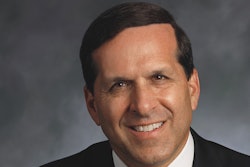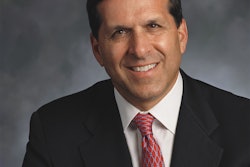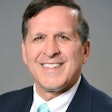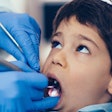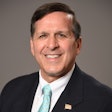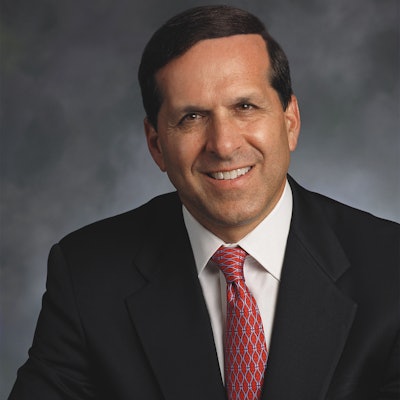
Collections in dental practices have not traditionally been a major issue. In the history of dentistry, dental practices used to send bills to all patients and wait for payment. This worked because patients generally paid their bills, and cash flow typically remained fine. The practice could manage its expenses, doctors had sufficient income, and most of the money eventually came in.
Then in the 1980s, several consultants/speakers made collections a much bigger deal. They taught practices how to structure collections in a changing world where credit cards were accepted. The concept of collecting at the time of the service became popular and has remained so.
Today, we find a slightly different situation. Many patients are maxed out on credit cards, patient financing is available, insurance companies take longer to send reimbursements, and those reimbursements are either not increasing or even declining. All of this plays into the importance of cash flow for dental practices dependent on collections.
The target
Any good business has a target for almost every measurable action in the business. Levin Group teaches and endorses having targets for many areas, including annual production goals, daily production goals, overhead percentages, hygiene production, no-show percentages, number of new patients, average production per provider, average production per hour, and a host of others.
At first, these key performance indicators may seem overwhelming, but working with key statistics is the only way to accurately measure, strategize, and ultimately improve the practice. The days of dentists simply "wandering" through a career and doing well are getting tougher.
One statistic that every practice should track is collections, and our recommendation is that practices collect 99% of what is owed. A business runs on cash and cash flow. It has bills to pay, compensation for staff, and income for doctors. It may want to make investments in the practice, such as expansion, new technology, modernization, or relocating.
This all takes cash and cash flow. A practice that has a sufficient amount of cash will always be fine. Today, most practices have reasonable cash but often for the wrong reason. They have reasonable cash because doctors are always willing to take less when necessary if a larger percentage of the current cash and cash flow is going toward expenses.
In the Levin Group surveys of 2022 and 2023, we found a combined increase in overhead of approximately 10% or more. This is due to higher staff compensation and inflation. It will not be reversing.
As overhead increases, there are only a few solutions that can offset these changes. One is to increase practice production by the same amount as the increase in overhead (if the practice wants to remain stagnant) or by more than the overhead increase if it wants to enhance performance and grow in profitability.
The steps to improve collections
Before we jump into the steps to improve collections, I want to give one caveat. We talked to many practices that believe they already collect 98% or 99%. This is misleading in that they have not written off bad debt. One Levin Group data point is that after 60 days, the chance of collection of an overdue account is less than 10%. Yet we see practices that carry overdue balances for months and even years.
Let's break down the steps of collecting money and make this simple. Success is ultimately about having great systems that are delineated step by step with appropriate scripting to train the team. If you keep your steps simple, the team has a better and faster chance of mastering the systems and achieving the stated targets.
1. A discount for paying upfront by cash or check.
This incentive is simple, but it cannot be used for most insurance-assisted cases. Insurance companies do not allow discounts on the co-pay. And you don't want to discount the fee to the insurance company or they may lower your reimbursements when they create a new profile for your practice. For the noninsurance patients, you can offer a discount if they pay in cash or with a check upfront, which eliminates any further thought about collections.
2. Credit cards
Again, this is easy. America runs on debt, and Americans run on credit cards. At least until they max them out. Eighty percent of dental practice payments are by credit card and this will continue.
3. Payment plans
This one gets tricky. In this case, a payment plan does not refer to a long-term payment plan. The goal here is to collect all of the money by the time the service is finished.
If you have a multiple appointment case, it is OK to break up the payments throughout the case, as long as the final payment is made by the final appointment. Keep in mind again that after 60 days, your chances of collection are not particularly good.
4. Patient financing
Use it and use it a lot. It gives patients another way to access debt when they have no other options. People who need financing typically cannot afford your treatment outright and should be given the option to finance the case, interest-free if possible.
If you are not increasing the use of patient financing every year, that is an unhealthy sign, because more people will require financing to have treatment. Even with a sign at the front desk, most patients are not aware that financing is available or how it works.
Make this a standard part of patient communication and treatment plan presentations, and you will immediately see production and collections increase. The small amount that you have to pay to the patient financing company is minor especially compared to not getting the case at all.
Summary
Collections (which lead to cash and cash flow) are going to become more important than ever before. The main reason to collect money at a 99% level is so the practice has sufficient cash flow to pay all bills and provide sufficient income and savings for doctors, who have invested heavily in their careers.
The average age of retirement today for dentists according to the ADA is approximately 69 years of age. We believe that this retirement age will increase within the next five years. Practices that collect money properly and have sufficient cash flow will have doctors who reach financial independence and/or retire earlier. Being in a good cash position by having excellent collections is always a good thing.
Dr. Roger P. Levin is CEO of Levin Group, a leading practice management and marketing consulting firm. To contact him or to join the 40,000 dental professionals who receive his Practice Production Tip of the Day, visit LevinGroup.com or email [email protected].
The comments and observations expressed herein do not necessarily reflect the opinions of DrBicuspid.com, nor should they be construed as an endorsement or admonishment of any particular idea, vendor, or organization.




